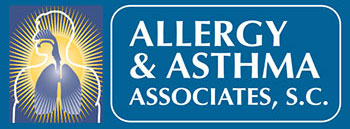Food allergies are more common than ever before. In the United States, the occurrence of food allergies in children went up 50 percent between 1997 and 2011. Potentially life-threatening allergies affect increasing numbers of adults worldwide, although researchers don’t yet know why.
Since more people have allergies, it’s not surprising there’s a lot of discussion about food safety. Unfortunately, misinformation is often spread among family members and friends. Dispelling the myths about allergies helps everyone to protect themselves and their children from serious reactions.
Myth 1: “All-Natural” Food Won’t Cause Allergies
Many health-conscious consumers avoid processed and packaged food in favor of natural alternatives. However, this does not prevent allergies. Fewer than 1 percent of allergy sufferers react to food additives like nitrates or food coloring.
In fact, the proteins in real food cause the greatest number of allergic reactions. Overwhelmingly, reactions are the result of consuming one of the “big eight” foods: peanuts, milk, eggs, wheat, soy, tree nuts, fish or shellfish. Combined, these eight make up 90 percent of allergic reactions from food.
Myth 2: Kids Can’t Grow Out of Allergies
Statistics show that milk, egg, soy and wheat allergies often don’t last beyond teenage years, sometimes disappearing in early childhood. That gives hope to many parents. However, peanut, tree nut, fish and shellfish allergies are lifelong for most people.
To stay safe, your doctor may recommend regular allergy testing for your child. An allergy test may include a “food challenge,” where a doctor monitors for any reaction after giving increasing doses of a certain food. Often, a blood test alone is not sufficient to diagnose an allergy.
Myth 3: Food Allergy, Intolerance and Sensitivity Are the Same
An allergy is a function of the body’s immune system. The reaction is its way of fighting off a potential threat, by releasing chemicals such as histamine. Intolerance, by contrast, occurs because of a missing enzyme required to digest a certain food.
Lactose-intolerant people, for example, lack the necessary lactase to digest dairy. Unlike an allergy, intolerance cannot trigger an immediate, life-threatening reaction, such as anaphylaxis. Sensitivity refers to any unpleasant result from eating a particular food, such as a headache or heartburn.
Myth 4: Food Allergies Always Start in Childhood
Food allergies can start at any age. If you’re a parent with an allergy, or condition such as eczema or asthma, you are more likely to have a child with food allergies. Children with food allergies are more likely to have asthma or other kinds of allergies, such as hay fever, than kids without food allergies.
Myth 5: Hand Sanitizer Removes Allergens
In schools and facilities where food is prepared or shared, administrators try hard to prevent cross-contact of allergens. Even the oils or unseen particles from peanut and other contaminants may cause life-threatening reactions in those with food allergies.
Cleaning regimens that use soap and water, or all-purpose cleaner, and sanitizer, are effective for surfaces. Plain water and hand sanitizer do not, however, remove allergens from hands. A small study found peanut allergens remained on three out of 12 hands washed with plain water and six out of 12 hands treated with antibacterial hand sanitizer. To be safe, always wash with soap and water.
As with all serious medical issues, when it comes to food allergies, information is power. Often all it takes is a few extra minutes to become informed about what you’re eating, what you’re serving, and how you can make a change to keep your friends and family safe.


